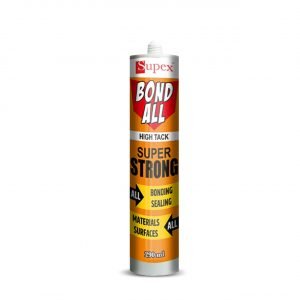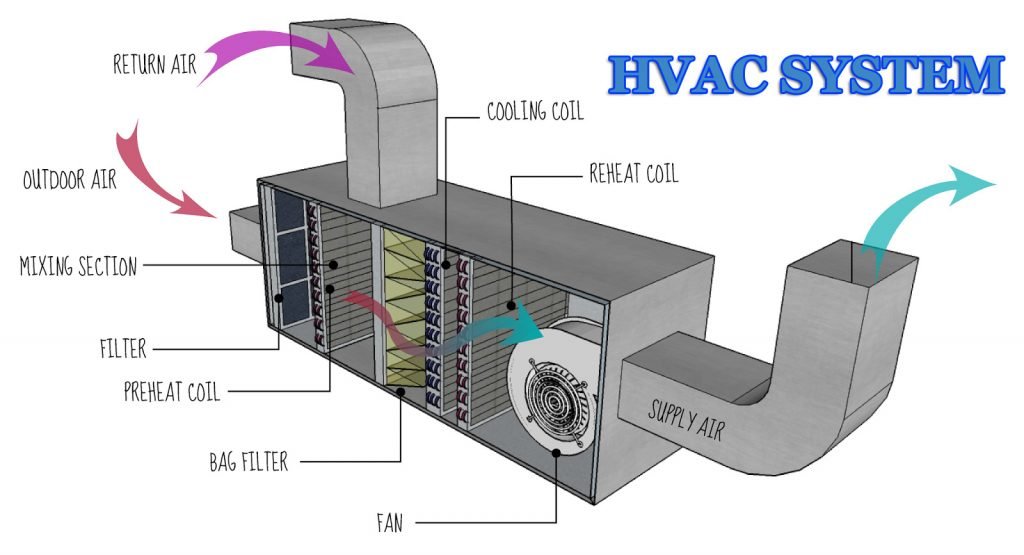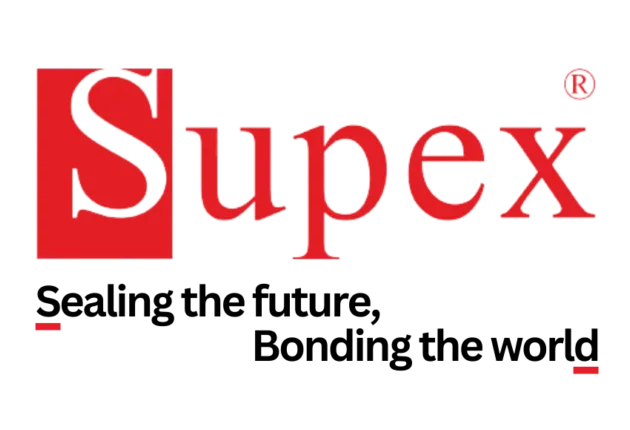Applications of Adhesives and sealants in the HVAC Industry
Adhesives and sealants play a crucial role in the HVAC (Heating, Ventilation, and Air Conditioning) industry, offering efficient and durable bonding solutions that support the assembly, maintenance, and installation of HVAC systems. Below are some of the key applications of adhesives in the HVAC industry:
1. Ductwork Sealing
Purpose:
Adhesives are used to seal ductwork to ensure airtightness and minimize energy loss. They provide a durable, flexible seal that prevents air leakage between ducts, joints, and seams.Benefits:
- Ensures energy efficiency.
- Prevents dust and moisture infiltration.
- Minimizes noise and vibrations in ductwork.
Typical Adhesive Types:
- Polyurethane Adhesives: Used for bonding and sealing, offering flexibility and high bond strength.
- Silicone Sealants: Used for their excellent temperature resistance and flexibility.
2. Insulation Bonding
Purpose:
Adhesives are essential in bonding insulation materials to HVAC components like pipes, ducts, and units. Proper bonding prevents insulation material from shifting or coming loose over time, ensuring optimal thermal efficiency.Benefits:
- Enhances energy efficiency by maintaining consistent thermal performance.
- Prevents air leakage and moisture buildup.
- Ensures insulation stays in place, reducing noise and vibration.
Typical Adhesive Types:
- Spray Adhesives: Often used for fast and easy application of insulation materials.
- Acrylic Adhesives: For strong bonds that hold insulation materials without compromising flexibility.
3. Sealing Refrigerant Lines and Pipes
Purpose:
Adhesives help seal refrigerant lines and pipes to prevent leaks in HVAC systems. This ensures the refrigerant stays contained within the system, preventing costly energy loss and environmental damage.Benefits:
- Prevents refrigerant leakage.
- Helps maintain system pressure.
- Protects components from corrosion.
Typical Adhesive Types:
- Epoxy Sealants: Known for their chemical resistance, these sealants are ideal for sealing refrigerant pipes.
- Butyl Sealants: These provide effective sealing for metal and plastic pipes in HVAC systems.
4. Bonding HVAC Components
Purpose:
Adhesives are used in the assembly of various HVAC components such as fans, filters, blowers, and other parts of the system. Adhesives provide an efficient bonding solution for materials like metals, plastics, and composite parts.Benefits:
- Enables fast and efficient assembly.
- Reduces reliance on mechanical fasteners, simplifying design and production.
- Increases the durability of components while maintaining structural integrity.
Typical Adhesive Types:
- Structural Acrylics: Ideal for bonding HVAC components due to their high strength and resistance to environmental factors.
- Polyurethane Adhesives: Suitable for bonding a wide range of materials in HVAC systems.
5. Gasketing and Joint Sealing
Purpose:
Adhesives are commonly used to create gaskets and seals for HVAC systems. These gaskets prevent air and water leakage, ensuring airtight seals between components such as flanges, access panels, and covers.Benefits:
- Reduces energy loss by providing tight, secure seals.
- Improves the system’s overall efficiency and lifespan.
- Helps avoid contamination and maintains clean air circulation.
Typical Adhesive Types:
- Silicone Sealants: For their excellent temperature and weather resistance.
- Foam Gasket Adhesives: For providing easy-to-apply, custom-fit seals.
6. HVAC Equipment Assembly and Mounting
Purpose:
Adhesives are used to bond and mount HVAC units and components like compressors, fans, and HVAC control panels into enclosures or frames. Adhesives help reduce noise, vibration, and the need for fasteners.Benefits:
- Minimizes the need for mechanical fasteners, making assembly cleaner and more efficient.
- Helps dampen noise and vibration.
- Reduces the weight of HVAC systems.
Typical Adhesive Types:
- Structural Adhesives: For heavy-duty bonding of metal parts or components.
- Vibration Damping Adhesives: Used to reduce vibration and noise during HVAC operation.
7. Weatherproofing and Exterior Sealing
Purpose:
Adhesives and sealants are used in the weatherproofing of HVAC components, particularly for outdoor units. They provide protection against wind, rain, and environmental contaminants.Benefits:
- Protects external components from the elements.
- Extends the lifespan of HVAC systems by preventing corrosion and damage.
- Improves performance by ensuring airtight and watertight seals.
Typical Adhesive Types:
- Polyurethane Sealants: Known for their flexibility and durability in outdoor conditions.
- Silicone Sealants: Used for their excellent weather resistance.
8. Sealing Air Conditioning and Heating Units
Purpose:
Adhesives are used to seal air conditioning and heating units, preventing air or refrigerant leaks and improving efficiency.Benefits:
- Enhances system performance by reducing energy loss.
- Protects sensitive components from moisture, dust, and dirt.
- Increases the lifespan of units by reducing wear and tear.
Typical Adhesive Types:
- Epoxy Sealants: Excellent for durable, long-term sealing.
- Silicone and Butyl Rubber Sealants: Ideal for flexible seals that need to withstand temperature fluctuations and vibration.
9. Mounting HVAC Filters and Screens
Purpose:
Adhesives are used to mount filters and screens inside HVAC units. This ensures they stay in place, allowing for proper filtration and air flow.Benefits:
- Secures filters and screens to ensure consistent air quality.
- Prevents the need for screws or nails, reducing assembly time.
- Helps maintain clean and efficient airflow in the system.
Typical Adhesive Types:
- Acrylic Adhesives: For clear, strong bonding and ease of application.
- Rubber-based Adhesives: For flexible and durable mounting of filters and screens.
10. Preventing Corrosion in HVAC Systems
Purpose:
Adhesives and coatings are often used to prevent corrosion of metal parts within HVAC systems, especially those exposed to moisture or high humidity environments.Benefits:
- Protects against rust and corrosion.
- Extends the life of metal components.
- Reduces maintenance needs and downtime.
Typical Adhesive Types:
- Corrosion-resistant Adhesives: Used to bond and protect metal parts.
- Epoxy Coatings: For long-lasting protection against rust and corrosion.
adhesives and sealants
Request a Consultation
Mobile/ Whatsapp: +91 9699892782, Email: sales@supex.in
Click HereApplications of adhesives and sealants
Commercial and residential HVAC system require proven sealing, bonding and noise deadening systems. Manufacturers use SUPEX adhesives and sealants to bond, seal and soundproof metal bodies and frames in filter systems with EHS friendly and certified solutions. Thus they acheive cost-optimization and long-term results.
Structural Adhesives
Bond and seal metal bodies and to secure stiffeners on thin metal sheets, while providing a structural, weatherproof and vibration damping joint that can be over-painted.
ADVANTAGES
- Safe and long-term durable joints, Simplified assembly instead of mechanical fixtures.
- Material savings due to the potential use of thinner metal sheets.
- No corrosion caused by screw holes and rivets.
- Damping of vibrations and noise
MS Polymer Adhesives
 MS Polymer adhesive & sealant is Low odor, ageing and weathering resistant, bonds well to a wide variety of substrates without the need for special pre-treatments. It is suitable for interior and exterior elastic sealing and bonding applications on substrates such as timber, glass, metals, metal primers, ceramic materials and plastics.
MS Polymer adhesive & sealant is Low odor, ageing and weathering resistant, bonds well to a wide variety of substrates without the need for special pre-treatments. It is suitable for interior and exterior elastic sealing and bonding applications on substrates such as timber, glass, metals, metal primers, ceramic materials and plastics.
TYPICAL APPLICATION AREAS:
- General machinery, body and frame sealing and bonding
- Hygiene, ventilation and air conditioning systems
- Store refrigerators and refrigerating rooms and trucks
- Food processing and packaging machinery
- Sealing and bonding in recreational vehicles
Duct Sealant
Polyurethane Sealants
design for industrial application. It can be painted. It forms a highly elastic, tear and weather resistant joint. It adheres without primer on substrates commonly used like wood, anodized aluminum, polyester, glass, concrete, baked clay, stone, ceramic tiles. Applications :
- HVAC cabinet
- Truck and trailer sealing
- Adhesive for roof bows of truck and trailer
- Refrigerated counter
Polyurethane Foam Spray Gap Fill Sealants
Supex 100 PU foam spray sealants are used to fill large gaps. The HVAC systems that make a home comfortable create penetrations (openings) that can create drafts, making living spaces uncomfortable. These penetrations not only allow air to seep into and out of the home, but they also may be forcing equipments to work harder than they need to.
Conclusion
Adhesives and sealants are indispensable in the HVAC industry, providing efficient solutions for bonding, sealing, insulating, and weatherproofing various components of HVAC systems. They improve energy efficiency, system performance, and longevity while reducing assembly costs and simplifying installations. Whether for sealing ducts, bonding insulation, or mounting components, the right adhesive or sealant ensures the HVAC system operates smoothly, efficiently, and with minimal maintenance over its lifespan.



2 thoughts on “HVAC Adhesives & Sealants in India”
this really is very impressive
Great article to read, all the tips are great….